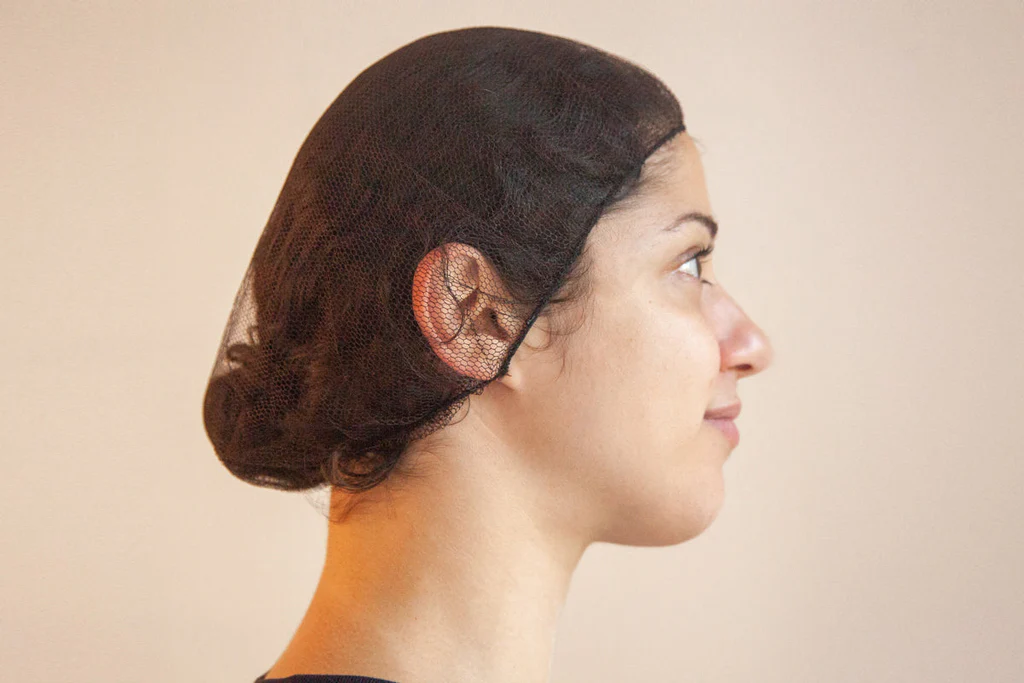
Hair nets are simple yet incredibly functional items that have been used for centuries across various industries and cultures. They serve multiple purposes, from maintaining hygiene and safety in food preparation environments to being essential accessories in the world of dance and sports. Despite their unassuming nature, hair nets have played a crucial role in many areas of life, demonstrating their adaptability and significance.
This article will explore the history of hair nets, their different types, practical applications, and the reasons they remain an essential tool across various sectors.
The History of Hair Nets
Hair nets date back to ancient times, with evidence of their use found in early civilizations. The ancient Egyptians, Greeks, and Romans all used forms of hair containment to maintain cleanliness and for aesthetic purposes. In ancient Egypt, nets made from linen or palm fibers were worn by women to protect elaborate hairstyles and maintain a neat appearance.
During the Middle Ages, women often wore veils or wimples, but these eventually evolved into hair nets in the late Renaissance period. Hair nets became especially popular during the Victorian era in the 19th century, when women used them as fashionable accessories to hold their voluminous hairdos in place. These early hair nets were often made from delicate materials such as silk or lace and were embellished with beads or jewels, symbolizing elegance and status.
With the advent of the industrial revolution in the late 19th century, the practical use of hair nets became more widespread. Factories and food production facilities started recognizing the importance of maintaining hygiene, leading to the development of hair nets made from more practical materials like cotton or nylon. This marked a shift from hair nets being solely a fashion accessory to a functional necessity in certain industries.
Modern Hair Nets: Materials and Types
Today, hair nets are made from a variety of materials depending on their intended use. The two most common materials are nylon and polyester, both of which offer durability, flexibility, and breathability. Hair nets may also be made from latex, mesh, or fine thread, catering to specific needs in different sectors.
Here are the most common types of hair nets:
- Nylon Hair Nets: These are the most widely used hair nets, especially in the food service and healthcare industries. They are lightweight, inexpensive, and easy to produce. Nylon nets are ideal for short-term use as they are disposable and provide a secure fit without causing discomfort.
- Mesh Hair Nets: Mesh nets are often used in ballet, theater, or dance performances, as they provide a finer, invisible containment for hair. They are popular for maintaining intricate hairstyles and are often worn under wigs or hats to prevent hair from shifting during performances.
- Polyester Hair Nets: These are slightly more durable than nylon hair nets and are often used in industrial settings where workers need to wear them for extended periods. Polyester hair nets are reusable and washable, making them a more sustainable option.
- Invisible Hair Nets: Popular in professional settings, especially in beauty salons, invisible hair nets are extremely fine and are designed to hold hair in place without being noticeable. They are often used to maintain hairstyles without compromising the overall look.
- Latex Hair Nets: These are typically used in medical or scientific settings where hair containment is crucial for maintaining a sterile environment. Latex nets offer a secure fit and are resistant to moisture, making them ideal for environments where hygiene is critical.
Practical Applications of Hair Nets
The primary function of a hair net is to contain hair, preventing loose strands from contaminating food, products, or sterile environments. Hair nets are essential in various industries, such as food preparation, healthcare, pharmaceuticals, and cosmetics. Here’s a closer look at their importance in key sectors:
1. Food Service Industry
In the food service industry, maintaining hygiene is paramount. Hair is one of the most common sources of contamination in food preparation areas, and the use of hair nets is often mandated by health and safety regulations. These regulations require workers in kitchens, bakeries, and food packaging facilities to wear hair nets to prevent loose hairs from falling into food.
In these settings, nylon and polyester hair nets are the most common due to their lightweight design and ease of use. They allow for proper ventilation, ensuring that workers remain comfortable while adhering to strict hygiene protocols. Hair nets are also used in combination with beard nets for individuals with facial hair, ensuring that all potential contaminants are contained.
2. Healthcare and Pharmaceuticals
In the healthcare sector, hair nets are an essential part of personal protective equipment (PPE). Surgeons, nurses, and other medical professionals use hair nets to maintain a sterile environment during procedures. Loose hair can carry bacteria and other contaminants, which is why strict regulations require healthcare workers to wear hair nets in operating rooms, laboratories, and sterile manufacturing areas.
Latex or polyester hair nets are often preferred in these environments due to their secure fit and ability to resist moisture. In pharmaceutical manufacturing, hair nets are used alongside other protective clothing to maintain a clean and controlled environment where drugs and medical devices are produced.
3. Beauty and Cosmetics Industry
In beauty salons and spas, hair nets serve a dual purpose: maintaining hygiene and preserving hairstyles. Hair stylists use invisible or fine-mesh hair nets to hold intricate hairstyles in place while applying makeup or performing other beauty treatments. The use of hair nets in this industry ensures that stylists can work on different aspects of beauty without disrupting the hair.
Hair nets are also used during treatments such as facials, ensuring that clients’ hair is kept out of the way without the need for hair ties or clips. This helps create a relaxing and professional environment while maintaining cleanliness.
4. Performing Arts and Sports
In dance, theater, and figure skating, hair nets are used to keep performers’ hair securely in place during performances. Ballet dancers, in particular, rely on fine-mesh hair nets to contain their hair in neat buns, ensuring that their movements are not hindered by loose strands. Hair nets are also used under wigs and headpieces in theater productions, allowing actors to change hairstyles quickly and efficiently.
In sports, athletes in gymnastics or figure skating also use hair nets to maintain a polished appearance and prevent hair from obstructing their vision. Hair nets in these settings are usually fine-mesh or invisible, ensuring they do not detract from the athlete’s overall look.
The Importance of Hair Nets in Hygiene and Safety
Hair nets are crucial for ensuring hygiene and safety in various industries, particularly in food preparation, healthcare, and pharmaceuticals. Hair is a natural carrier of bacteria, dirt, and other contaminants, and the use of hair nets minimizes the risk of contamination. In sterile environments, such as laboratories and operating rooms, maintaining cleanliness is essential for the health and safety of patients, and hair nets are a simple yet effective tool in achieving this.
In the food service industry, hair nets help businesses comply with local and national health regulations. The consequences of not wearing hair nets in food preparation areas can be severe, ranging from customer complaints to health code violations, fines, and potential business closure.
Furthermore, hair nets provide a cost-effective solution for businesses seeking to maintain high standards of hygiene without compromising employee comfort. Modern hair nets are designed to be lightweight, breathable, and easy to wear for extended periods, ensuring that employees can focus on their tasks without being distracted by discomfort.
Environmental Considerations: Sustainable Hair Nets
As environmental awareness increases, there has been a shift toward creating more sustainable hair nets. Traditional hair nets made from nylon or polyester are often disposable, contributing to plastic waste. However, manufacturers are now exploring the use of biodegradable materials, such as organic cotton or plant-based fibers, for hair nets that are both effective and eco-friendly.
Reusable hair nets made from durable materials, such as polyester or fine mesh, are also gaining popularity in industries where long-term use is viable. These options help reduce the environmental impact of single-use hair nets while providing the same level of hygiene and containment.
Conclusion
Hair nets, though simple in design, play an essential role in maintaining hygiene, safety, and professionalism across a wide range of industries. From their historical roots as decorative accessories to their modern-day applications in food service, healthcare, and the performing arts, hair nets have proven to be versatile and indispensable.
As industries continue to evolve, hair nets will remain a vital tool, offering practical solutions for containing hair and ensuring the cleanliness and safety of products, environments, and people.

